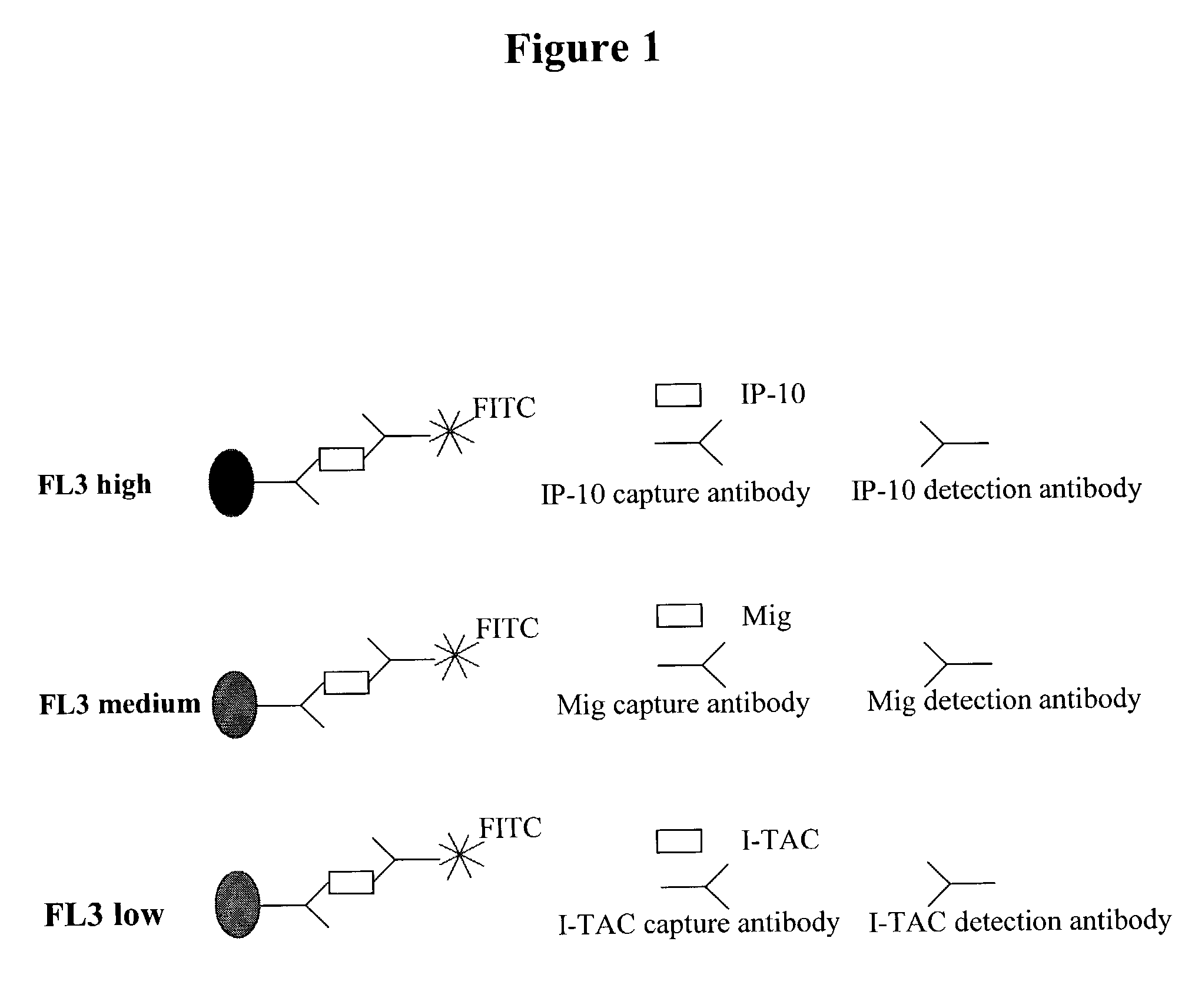Systems and methods for identifying organ transplant risk
- Summary
- Abstract
- Description
- Claims
- Application Information
AI Technical Summary
Benefits of technology
Problems solved by technology
Method used
Image
Examples
example 1
Correlation of Urine IP-10 With Graft Rejection
[0096]This example describes the correlation of urine levels of IP-10 with kidney graft rejection in human subjects. Forty-five human subjects that had undergone kidney transplant were utilized. Urine IP-10 levels were measured repeatedly following organ transplant. IP-10 levels were measured using a quantitative colorimetric sandwich ELISA assay (R & D Systems, Minneapolis, Minn.). Subjects were divided into two groups, rejecters and non-rejecters, based on kidney biopsies. Biopsies were classified using Banff criteria (Solez et al., Kidney Int., 44:411 [1993]). All of the subjects were receiving anti-rejection therapy at the time of the study. Urine from ten normal (non-transplant) subjects was also tested.
[0097]In a majority of the non-rejecters, IP-10 levels remained at a constant, low level or decreased over time. In the rejecters, IP-10 levels remained at a constant, high level or increased over time. A urine level of IP-10 of gre...
example 2
Correlation of Urinary Chemokines with Graft Rejection and Treatment
[0099]The example describes the correlation of urinary chemokines levels with graft rejection and treatment. Urinary samples were collected from healthy individuals, kidney transplant recipients with stable graft function, and recipients with acute rejection. All patients with acute rejection were hospitalized and received anti-rejection therapy. Urinary samples were centrifuged, and supernatant was aliquoted and stored at −80° C. These samples, after thawing, were evaluated by ELISA for the expression of MCP-1, IP-10, and I-TAC.
Elevated Expression of Chemokines in Urinary Samples from Patients with Acute Rejection
[0100]As shown in Table 1, chemokines IP-10 and I-TAC were significantly increased in the urinary samples of patients with acute graft rejection and acute tubular injury, compared to healthy controls and kidney transplant patients with other pathologic changes. As presented in Table 2, if 100 pg / ml was use...
example 3
Flow Cytometry Based Technique for Quantification of Chemokines
[0106]This example describes a FACS method for the simultaneous detection of multiple chemokines. The fluorescence activated cell sorting (FACS) method uses fluorescence dye labeled beads that can detect 3 chemokines in one assay. In this example, IP-10, I-TAC and Mig were detected. Detection of these three chemokines was conducted in the same test tube simultaneously as depicted in FIG. 1. As the chemokine concentration increases, the mean fluorescence intensity for each group of beads increases. This correlation between the chemokine concentration and the mean fluorescence establishes the basis for this FACS quantitative method. A standard curve for each chemokine was constructed. This example demonstrates that EP-10, Mig and I-TAC can be simultaneously detected in a urinary sample.
PUM
 Login to View More
Login to View More Abstract
Description
Claims
Application Information
 Login to View More
Login to View More - R&D
- Intellectual Property
- Life Sciences
- Materials
- Tech Scout
- Unparalleled Data Quality
- Higher Quality Content
- 60% Fewer Hallucinations
Browse by: Latest US Patents, China's latest patents, Technical Efficacy Thesaurus, Application Domain, Technology Topic, Popular Technical Reports.
© 2025 PatSnap. All rights reserved.Legal|Privacy policy|Modern Slavery Act Transparency Statement|Sitemap|About US| Contact US: help@patsnap.com

